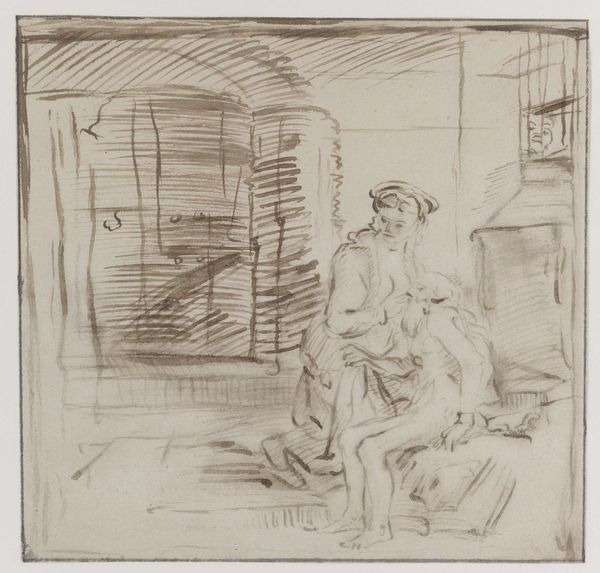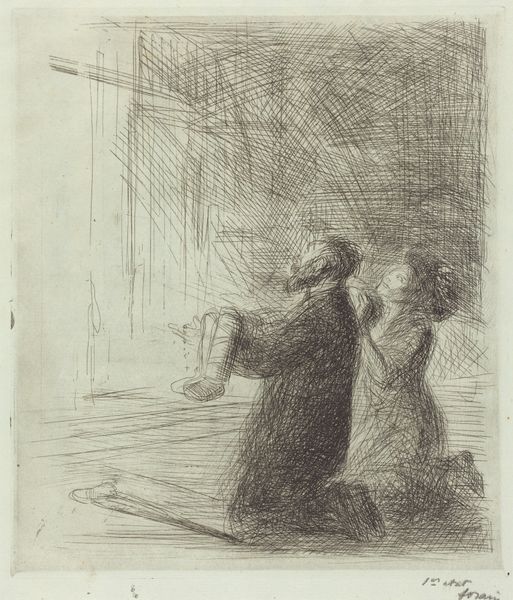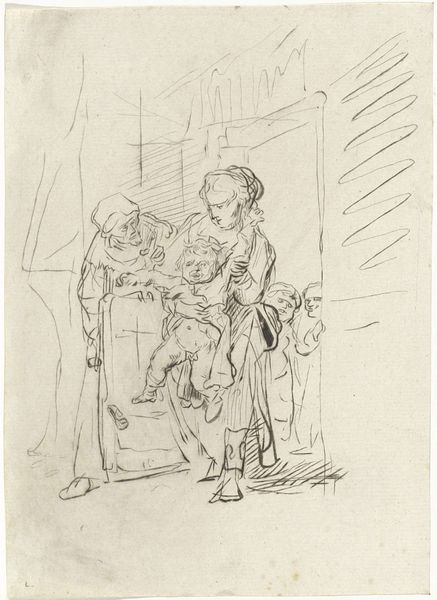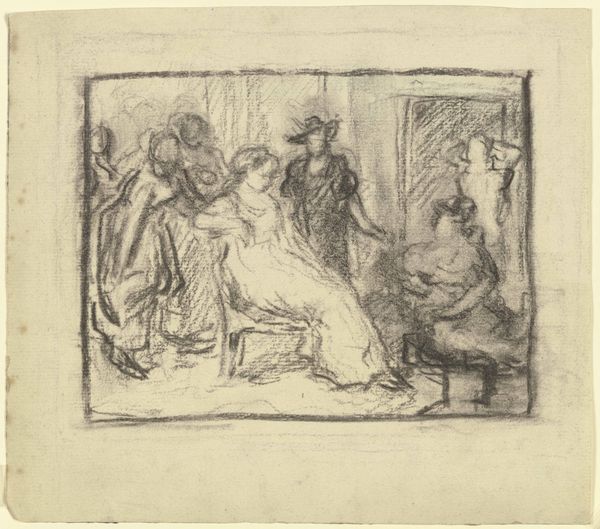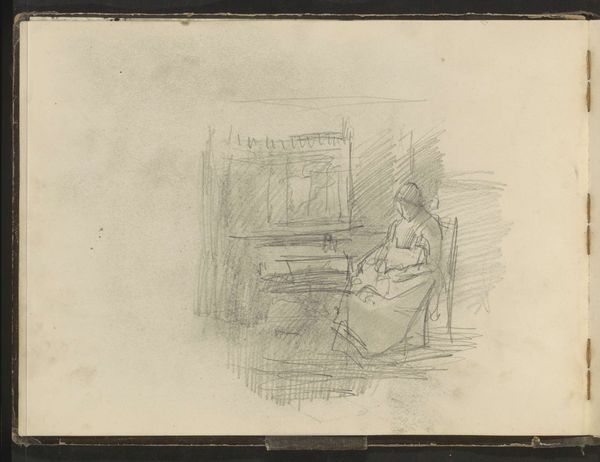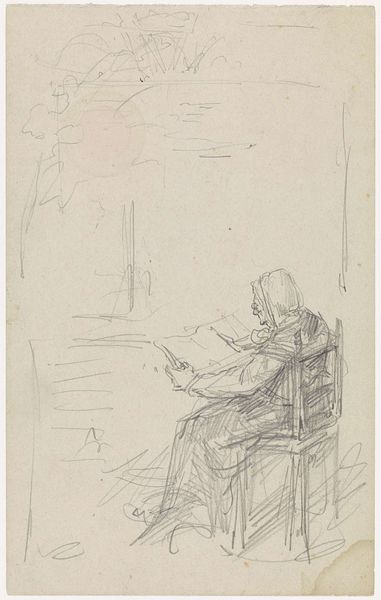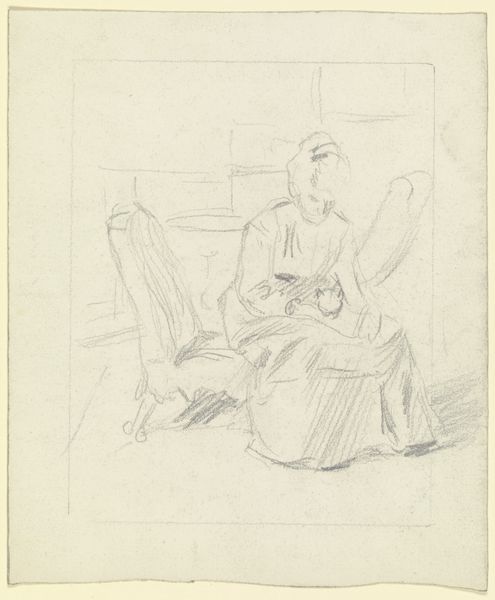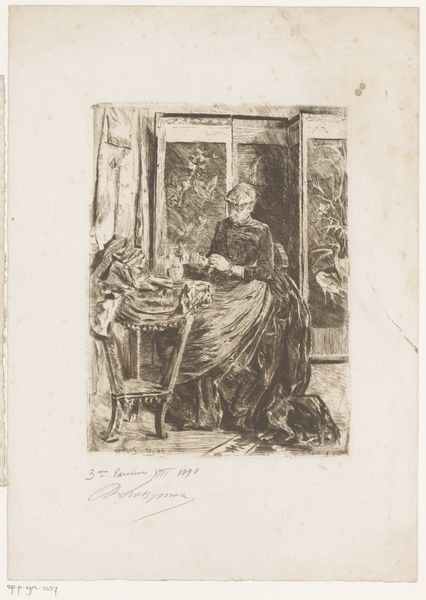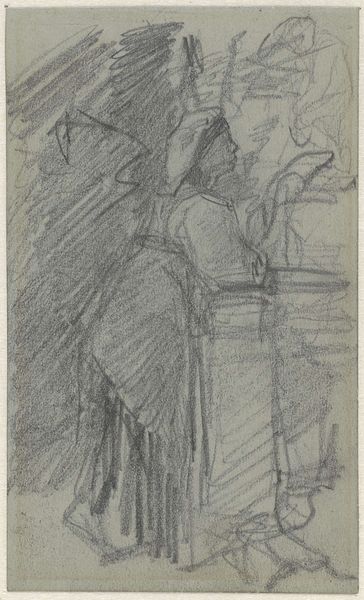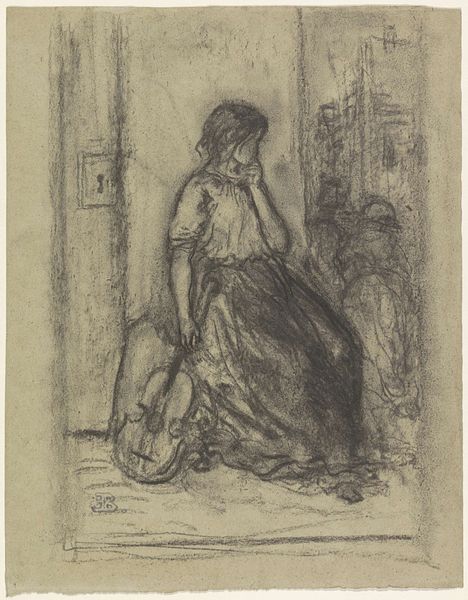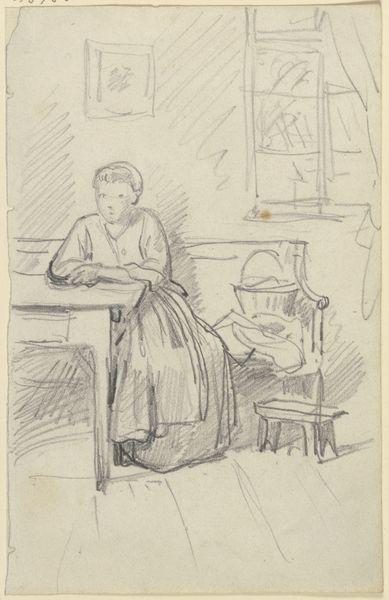
drawing, pencil, graphite
#
portrait
#
drawing
#
neoclassicism
#
pencil sketch
#
figuration
#
pencil
#
graphite
#
history-painting
Dimensions: 248 mm (height) x 170 mm (width) (bladmaal)
Editor: Here we have Nicolai Abildgaard's sketch, "Udkast til billedet af Homér," dating somewhere between 1743 and 1809. It's a pencil and graphite drawing, and the loose lines give it this ephemeral, almost dreamlike quality. What jumps out at you when you look at it? Curator: Ah, yes, Abildgaard's Homer. For me, it's the *feeling* it evokes. Think about the weight of history bearing down on this poor, perhaps imagined, old poet. He strums his lyre, but I wonder if he's really creating, or just… remembering? Look at how the lines tremble, searching for the form. Almost like Homer himself, blind, feeling his way through the darkness for the next verse. Does that resonate with you? Editor: Absolutely. There's a fragility to the sketch that mirrors the perceived frailty of old age. I can't help but feel a pang of empathy looking at him. It looks unfinished, I mean do you think this piece would be displayed in a gallery today without being considered a "finished piece"? Curator: Oh, undoubtedly! Because within its unfinished state lives its soul. Nowadays, we often embrace process over pristine perfection. This is not a painting with the "Mona Lisa"'s polish. I look at this artwork and imagine an echo of ancient myths, perhaps a story whispering itself onto paper. To ask a counter question: wouldn't we lose something profound if it were to be deemed "finished"? It gains a "what if..." element, it really begs the viewer to consider, am I wrong? Editor: That’s a compelling point. Maybe the sketch *is* the finished piece in this context. Curator: Perhaps every drawing has an origin that stays on that very sketch. Now *that* is worth celebrating, I would say! Editor: Thanks so much, this has helped me gain such a different outlook to this work of art!
Comments
No comments
Be the first to comment and join the conversation on the ultimate creative platform.
